There’s a chance you’ve been upsold or cross-sold while shopping online without even knowing it. You may have even converted on one of these sales opportunities, and for good reason.
The average consumer would admit they don’t like popups or distractions when online shopping, and that is true to an extent. But repeated studies show that upselling and cross-selling are an effective way to increase sales and average order value per customer. In fact, customers are 4.5x more likely to add recommended items to their carts during checkout.
When people see a personalized offer at the right time, they can’t help but at least think about how adding or upgrading their order affects them. Some may even convert on the fact that they fear missing out on a good deal.
As you’ll learn in this guide, upselling and cross-selling rely on simple psychological principles. Getting a basic understanding of these principles will help your ecommerce store motivate customers to take action before they miss out.
Upselling Vs Cross-selling: How They’re Different
While they sound the same, upselling and cross-selling serve two different purposes with the same goal in mind. Below is a visual example of how they work:
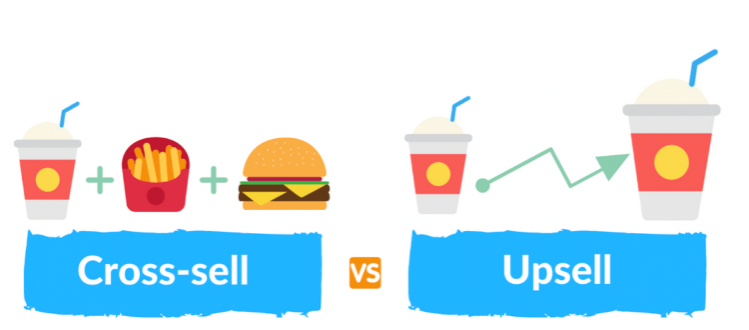
Cross-selling is when you offer customers complementary items that go well with what they already have in their cart.
Makeup giant Sephora does a fantastic job at this. Before the final checkout screen, offers for makeup brushes pop up anytime someone adds foundation, eyeshadow, etc., to their cart. These items go hand-in-hand, so it makes sense to bundle them together.
Upselling is when you offer customers an upgrade of the product they want. This might be a larger size of what’s in their cart or a bundled pack of what they initially planned to buy.
For example, if someone already has a pair of socks in their cart, you could upsell them a six-pack bundle. Your customers will see it as a better deal when they buy more, plus they can stretch their time between purchases.
Both methods work well and can increase the average order value of what your customers are putting in their carts.
Reasons Why Upselling Works
In this section, we’ll discuss the motivations behind upselling and cross-selling and give examples of how to work them in your online marketing strategy.
1. It Makes Online Shopping More Convenient
One way to think about upselling and cross-selling is the convenience it provides for customers. First, these pop ups show customers what they’re looking for in less time. People don’t always want to poke around your store to see what else it has to offer, so upselling and cross-selling streamlines the checkout process and gets customers from point A to point B efficiently.
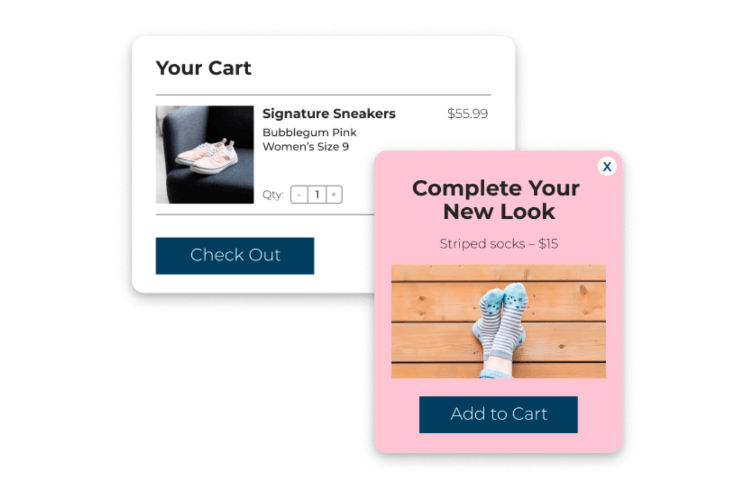
Sometimes customers may not even know certain products exist before seeing your recommendation. With the right personalization on your landing pages, you can shed light on more of your products.
Next, people tend to justify adding on products if it provides a solution to one of their problems. For example, if someone decides to buy the larger bag of cat food, it’s actually cheaper per ounce and they may earn free shipping. They also won’t have to make another cat food purchase so soon.
This level of convenience is one customers will happily pay more for, which means you’ll have a better chance at scoring an upsell and increasing your average order value.
One caveat here: Shoppers don’t respond well to willy-nilly product add-ons. For upselling and cross-selling to work effectively, you must offer personalized recommendations. You can do this manually or automatically with a lead gen tool. This shows your customers that you know what they’re looking for and want to help them find it, not just sell more products.
2. Customers Feel Like They’re Getting a Good Deal
Psychologically, scoring a good deal lights up the rewards center in our brains. We feel the relief of saving money on items we need, and who wouldn’t want more cash in their pockets, especially nowadays?
To feed your customers’ rewards centers, use these upselling and cross-selling techniques in your landing pages.
Bundle related products. Bundling products like socks and shoes (from our example earlier), t-shirts and shorts, or any other related items that typically are bought together is one way to upsell. Typically, when running the math, buying bundled items could end up saving the customer money while increasing their average order value. See the example below for what a product bundle may look like:
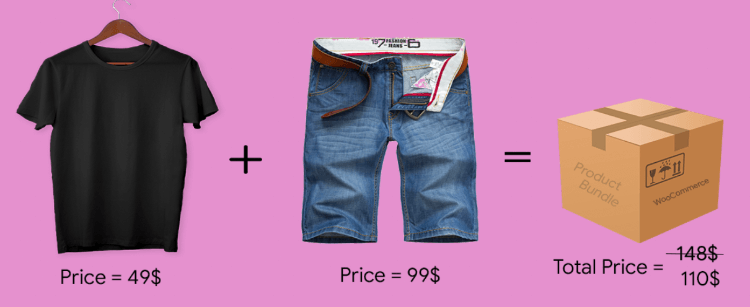
Highlight the real value of higher-priced items. To make upselling a no-brainer, consider showing shoppers the true value behind the price tag. Craft your product descriptions so customers realize, “If I buy the $200 jeans versus the $50 pair, they’ll last me longer and look better. The quality is worth it.”
This is where skilled copywriting comes in handy. While you’re not disparaging the more inexpensive item, you’re using your product description as a vehicle to drive more sales to the higher priced item.
Literally show the value. Sometimes it’s best to just show your customers what you want them to see. In this case, visualize the value of their savings in your product checkout. Sephora does this by enticing customers to add more to their carts in order to receive free shipping, see the example below:
Source: Ideas for upselling your customers, Sellbrite https://www.sellbrite.com/blog/how-to-upsell-your-customers/
According to PracticalEcommerce, free shipping could increase your online sales revenue by up to 10% – and it’s one of the most basic upsell techniques. You could also offer a free item or discount after reaching a specific dollar amount. Get creative with it!
By spelling out the value for the customer, you don’t risk confusion or the chance of someone misunderstanding your sale. This reinforces the notion of having a purpose for your upsells and cross-sells, not just doing it for the sake of more sales.
3. It Meets Shoppers at the Right Moment
Upselling and cross-selling tactics work so well because they meet shoppers at the right moment – when they’re already in “buying mode”.
Getting someone to buy from your brand is a lot easier when they’re actually on your site with items in their carts. This can be used as an opportunity to sell complementary items or get customers to upgrade their orders. In fact, nearly half of consumers in a Segment Survey said they bought an item that was recommended to them by a brand in the checkout stage.
As well as popups work, it’s important to not overwhelm customers when they’re finishing their orders. Your upsells and cross-sells need to be strategically placed and the items recommended need to be personalized to a customer’s cart. Improper targeting or triggering popups too early can end up hurting your checkout stage. Sometimes, it’s just best to let people checkout in peace.
4. It Takes Advantage of FOMO
The final reason why upselling and cross-selling appeal to us from a psychological standpoint is because it takes advantage of FOMO, or the fear of missing out.
As mentioned earlier, people want to feel like they’re getting a good deal, and if they see a good offer, they’ll weigh the outcome of not buying it versus buying it. They may ask themselves: Will skipping this flash sale make me regret not taking advantage of it? Do I just buy the item that I really wanted now instead of later?
The idea here is scarcity marketing, or increasing the value of a product by shedding light on its limited supply. Below are some examples many of us see all the time when shopping online, first a low-stock alert email:
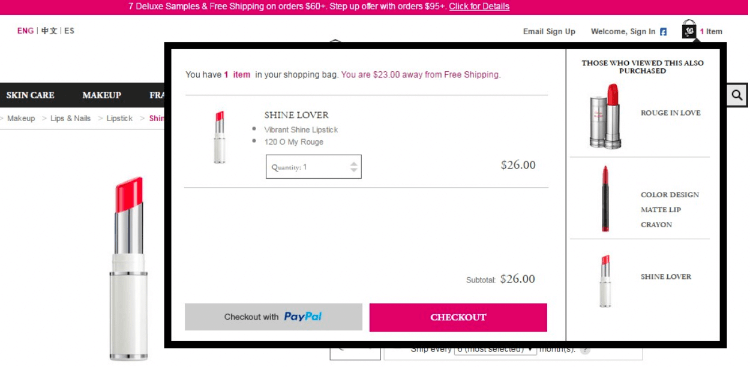
These types of marketing emails can be triggered to send when stock on a particular item is low or when you’re having a clearance sale. Next up are on-page checkout notifications:
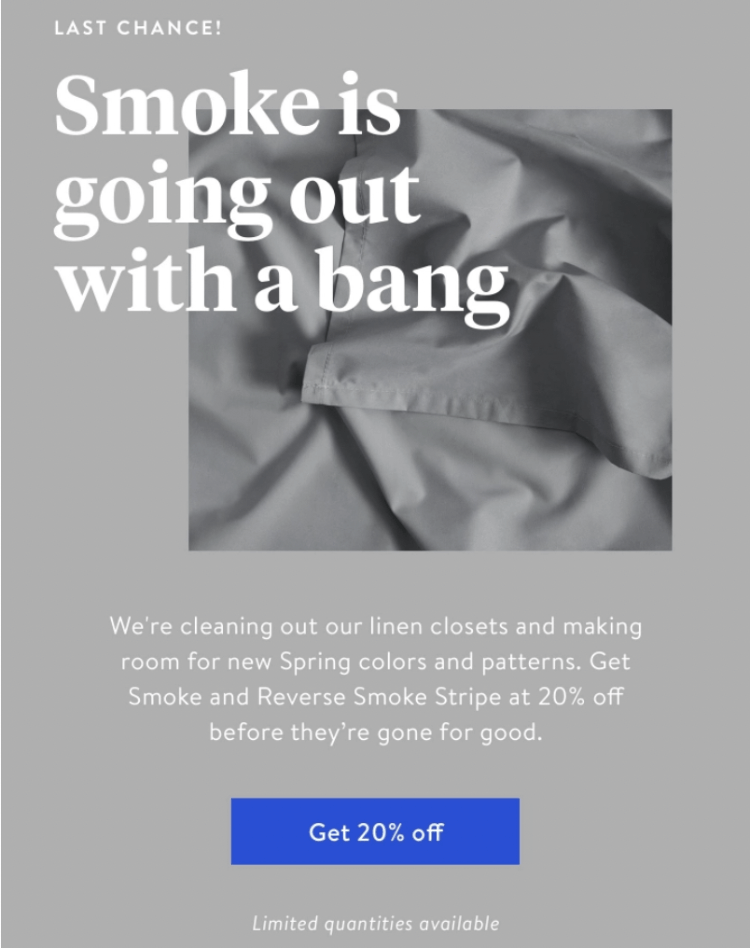
Seeing stock data in real-time is a great way to drive FOMO and ultimately a sale. The final scarcity marketing method we commonly see is the use of countdown timers.
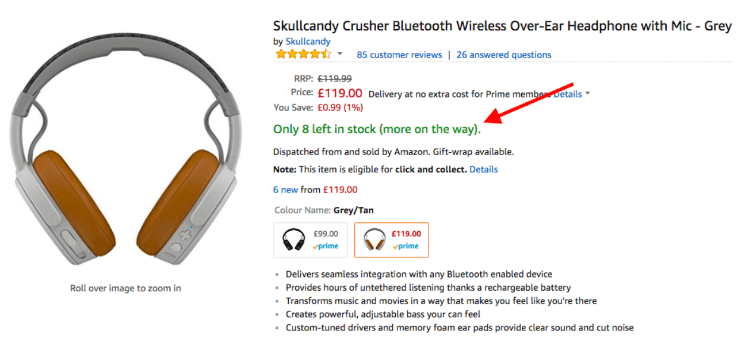
Launch these on your site during a seasonal sale, a flash sale, or during sales holidays like Black Friday & Cyber Monday.
All of the FOMO marketing examples you’ve seen above can be applied to your upsells and cross-sells as a way to get customers to add more items to their carts.
Sell More This Year
This article helped you understand more about the motivation behind why customers decide to convert on upsells and cross-sells. We also showed you four ways to apply these principles to your online store today. Even if you’re on a shoestring budget, upselling and cross-selling is a low-lift way to get the most out of your popups.
Author
Devin Pickell is a Growth Marketing Manager at Privy. He has been in the content marketing and growth space for over 6 years and his “outside-the-box” ideas have helped scale high-growth brands such as Sphere Consulting, G2, and Nextiva.





